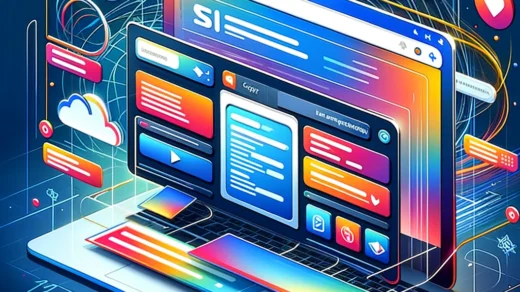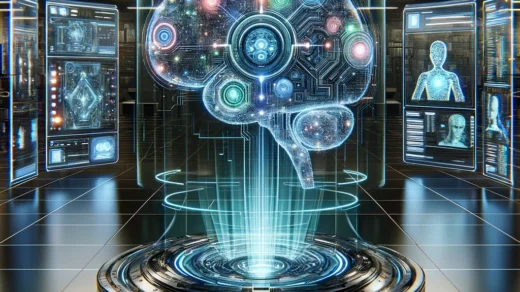Artificial intelligence has become a topic of interest not only for scientists and technologists but also for the general public. One of the most fascinating and rapidly growing areas within AI is the so-called “Generative AI.” But what exactly is it and why is it capturing the imagination of so many?
What is Generative AI?
Imagine being able to ask a computer to draw a landscape that has never existed, write a new song in the style of your favorite artist, or even create a video game based on a very basic description. This is, essentially, what generative AI does: it creates or generates new content based on what it has learned from existing data.
Generative AI uses advanced algorithms to analyze and learn from large amounts of data—such as images, texts, music, and more—then generates new examples that resemble the originals but are completely unique. Think of it as an intensive learner who, after studying thousands of paintings, can create their own artwork.
How Does it Work?
Although it may sound complex, the basic principle behind generative AI is relatively simple: it relies on mathematical models that can identify patterns, styles, and structures in large volumes of data. One of the most well-known types of generative AI is called “Generative Adversarial Networks” (GANs), where two neural networks—one generator and one discriminator—work together, in a sense “competing” with each other. The generator creates content, and the discriminator evaluates whether it is indistinguishable from the real thing. Through this process, the generator gradually learns to produce increasingly accurate and realistic results.
Applications of Generative AI
The applications of generative AI are as varied as they are exciting. In art, it has enabled the creation of pieces that could pass as human-made. In music, it has composed songs in various genres, challenging our perception of creativity. In product design, it facilitates the generation of 3D models and prototypes. Even in writing, generative AI is producing everything from poetry to entire articles.
Furthermore, in the scientific and medical fields, this technology promises to revolutionize the way we discover new drugs and therapies, by being able to quickly generate and evaluate new molecules and compounds.
Challenges and Ethical Considerations
As with any emerging technology, generative AI raises important questions about ethics and copyright. Who is the author of a work created by AI? How do we ensure that the technology is not used to generate misinformation or harmful content? These are challenges that society is still navigating.
Conclusion
Generative AI is blurring the lines between what we consider exclusively human creation and what machines can do. As we move forward, we are likely to see even more amazing applications of this technology, opening up a world of creative and technical possibilities. However, it is crucial to address the ethical challenges that accompany these advancements to ensure that generative AI is used in a way that benefits society as a whole. In summary, we are only at the beginning of understanding all that generative AI can offer, and the future promises to be as exciting as it is unpredictable.




